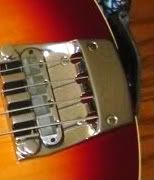Agent00Soul wrote:
AustinLeftyBass wrote:
Yep, even with that bad pic you can tell it's not a 4003.
Ron - You are our Rick collector. What exactly is the difference between a 4001 and 4003? It's just a redesigned neck right? I know both instruments overlapped for a few years but then the 4003 took over completely. Any difference in sound, playability etc?
There was an overlap of production of the two models. The REAL difference is the truss rods. The 4003 came to be in an effort to allow players to use a wider variety of strings, the 4001 was "touchy" when it came to certain strings, the neck reacted badly. The "first generation" 4003s are easily spotted because they have a 2-piece pickguard.

Reason being, the "fix" was the truss rods were inserted/adjusted from the body-end of the neck. The 2-piece 'guard allowed you to access the rods by just removing the neck pickup area of the the 'guard, leaving the controls section in place. These were the same rods as used in the 4001, but apparently this switcheroo did the trick. More on the rods in a bit.
Another way to spot a "first generation" 4003 is the additional screws at the rear of the tailpiece. This was to prevent "tail lift". On Ric basses, the pull of the strings causes the tailpiece to bend and raise up at the rear.

These updates to the original design only lasted a few years. Ric "purists" hated the look of the 2-piece 'guard and eventually totally new truss rods were designed and the adjustment returned to the headstock, thus eliminating the need for the 2-piece 'guard.
They also hated the look of the extra tailpiece screws, even tho' they prevented a well-known problem, so Ric did away with them and tail-lift returned.
Obviously, after production of the 4001 ceased, and the physical differences(pickguard and tailpiece screws) disappeared, a 4003 can be identified by the serial number(production date).
Hope this helps.





